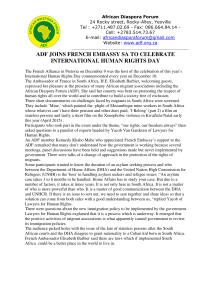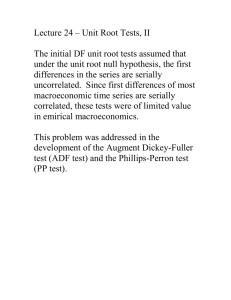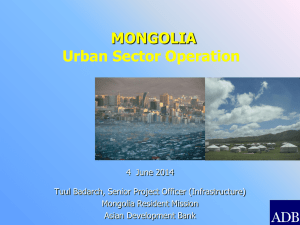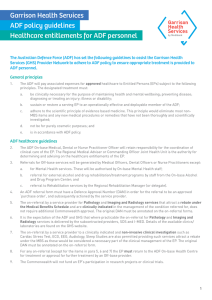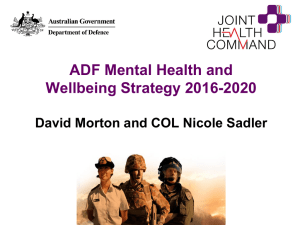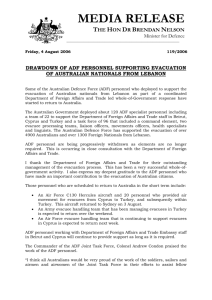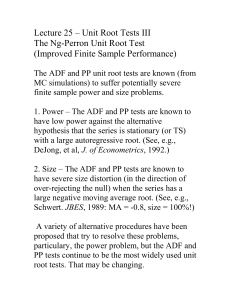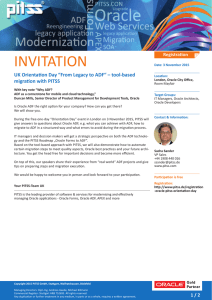Youth Gender and Climate Change
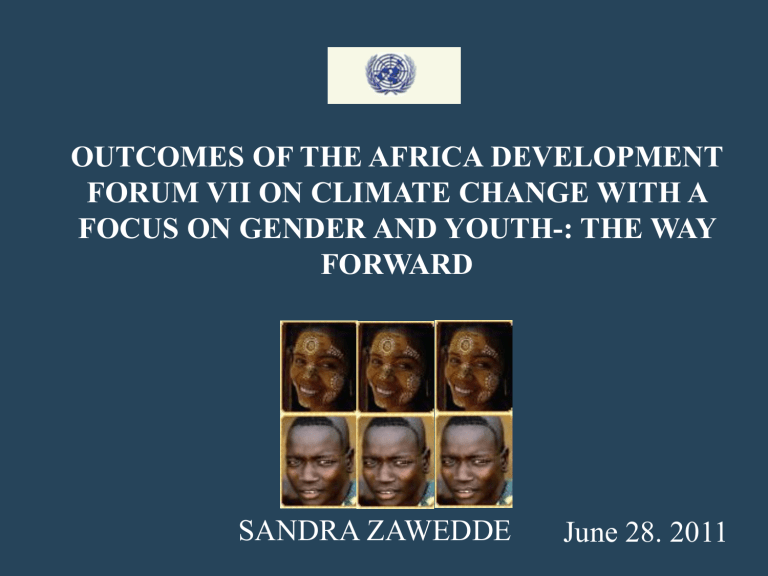
OUTCOMES OF THE AFRICA DEVELOPMENT
FORUM VII ON CLIMATE CHANGE WITH A
FOCUS ON GENDER AND YOUTH-: THE WAY
FORWARD
SANDRA ZAWEDDE June 28. 2011
Why a Pre-Africa Development Forum (ADF) on
Climate Change and Vulnerability ?
Can we address vulnerability if we don’t understand the issues?
• Increased pressure from Africa’s fast growing, youthful & urbanized population
• Increased disparities, decreased health, increased migration, affected livelihoods, food insecurity, & access to education etc
• Climate change impacts economic and social development
Objectives of ADF
Climate change and vulnerability :
• 2/3 of world’s youth lack sanitation- WHO, 2006.
• App. 20 to 50% youth in African lack access to improved sanitation facilities.
• In Ethiopia and Kenya respectively, children< 5 were 36 and 50 percent more likely to be malnourished
• In Niger children <= 2 were 72% more likely to be stunted if born during a drought (UNDP, 2007-
HDR).
Climate change and vulnerability :
• Food insecurity, decreased livelihoods. women own less than 10% of agricultural land
• Increased migration
• Dropout rates of school age girls
• Increased early marriages
• Increased sexual violence in emergency camps
Now that ADF is over: Way forward on the general ADF Outcomes
• Inputs in relevant international previous processes like Cancun and Rio+20
• Africa’s common negotiating position in other fora e.g. COP 17
• Basis for the preparation of an Action Plan on Climate Change
ADF Call for Action
What steps are being taken / could be taken to reduce the vulnerability of women and youth?
ADF Call for Action
• Support to the ClimDev-Africa Programme
• Allocate climate change funds through the Africa
Green Fund.
• Mainstream climate change concerns into NDPs led by the, COMEF.
• Gender and child-centered, ecosystem-based approach in climate change adaptation and mitigation
• Joint secretariat to strengthen Africa’s participation in International negotiations and enhance capacity
Some Progress and Actions taken thus far
• Continental climate-change programmes and initiatives endorsed by AU Summit:
– ClimDev-Africa Programme
– Great Green Wall of the Sahel and Sahara
– African Monitoring of the Environment for Sustainable
Development (AMESD) Programme;
• The Africa Climate Policy Centre (ACPC) to support effective implementation of Clim-Dev
Africa Programme.
• The Africa Green Fund
Look out for the major achievements and gaps and challenges in ensuring adequate attention to gender perspectives in these climate change efforts
Challenges encountered in the implementation of the outcomes
• Economic challenges
• Financing climate change
• Governance and leadership:
• Participation: Representation is inadequate
FINANCING
What are the critical issues for youth and women in financing or addressing financing of climate change at national and local levels?
PARTICIPATION
What steps are being taken / could be taken to increase the participation of youth and women in decision-making on climate change at different levels ?
What good practice examples can be provided?
Concrete recommendations
• Implement existing commitments
• Mainstream Climate change into HSD
• Strengthen population dynamics and programming in climate change responses
• Research and Capacity Building, South to south- UNECA/ACGS research to-date
MAINSTREAM
What steps are being taken / could be taken to mainstream gender perspectives?
What good practice examples can be provided?
Concrete recommendations cont.
Look at opportunities presented
• Innovation e.g. Agriculture- fertilizers, genetic engineering, dri-water, hydroponics.
• Green economy- green jobs
• Opportunity to reform education systems
• Solving Africa’s energy problems
• International cooperation
• Policy Integration- as a way of efficient resource mobilization and utilization.
Concrete recommendations cont.
Context is crucial and critical thinking is necessary.

